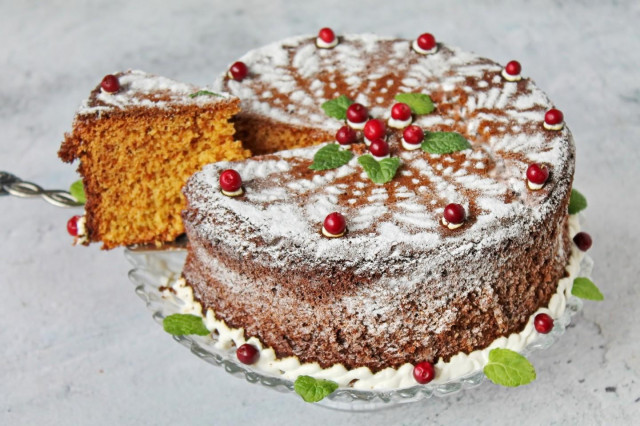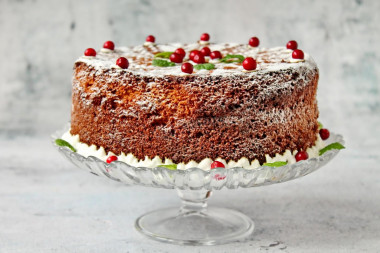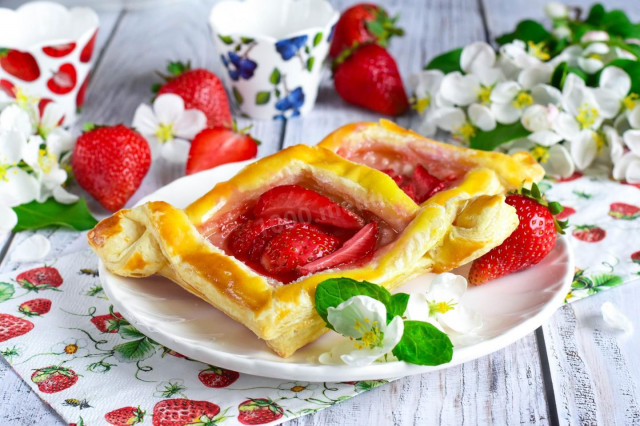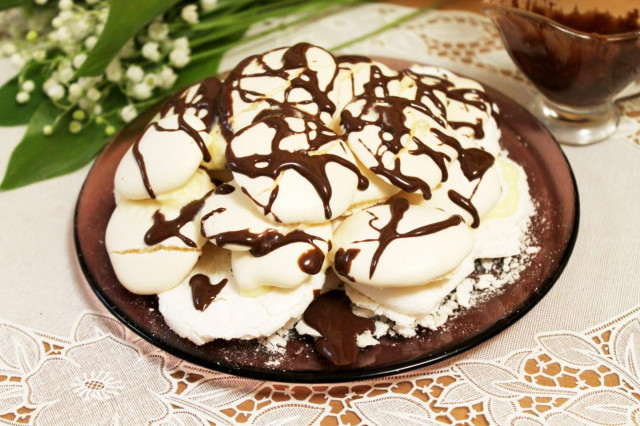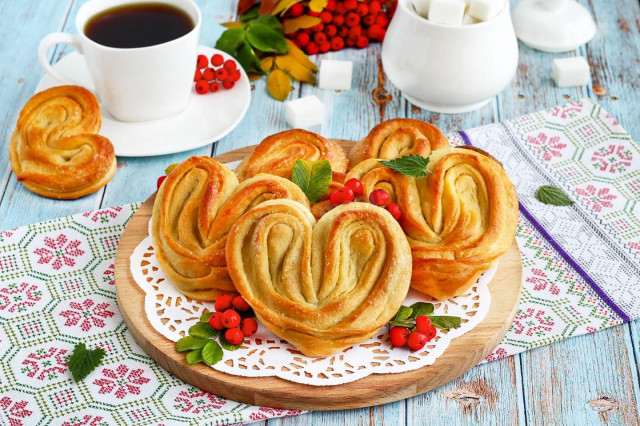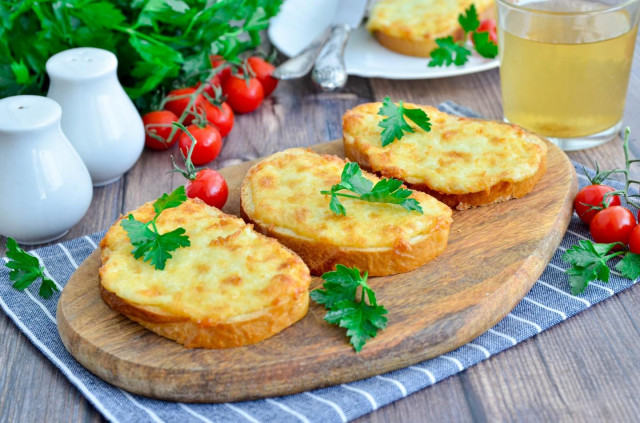Composition / ingredients
Step-by-step cooking
Step 1:
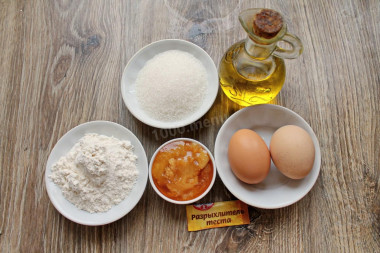
How to make a honey sponge cake? Prepare all the necessary ingredients for making honey sponge cake. Remove the eggs in advance so that they become room temperature, then the biscuit will be more tender. Also, be sure to wash the eggs to remove dirt and bacteria.
Step 2:

Separate the whites from the yolks. Put the whites in a bowl, and the yolks will be needed a little later. Turn on the mixer at medium speed and beat the whites into foam. Then turn up the speed and beat until soft peaks.
Step 3:
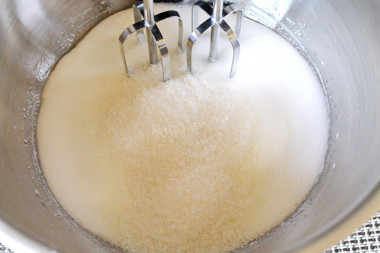
Continuing, add sugar and whisk until it completely dissolves. It will take about 10 minutes.
Step 4:
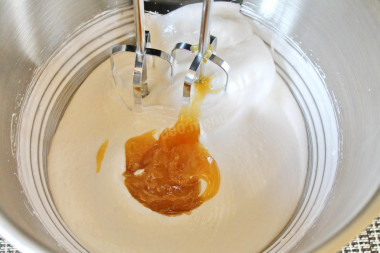
While whisking, add honey. You can take absolutely any honey, but its color will make the biscuit lighter or darker. Since honey is a beekeeping product, it can cause an allergic reaction. Therefore, when treating someone with a piece of sponge cake, warn about his presence.
Step 5:
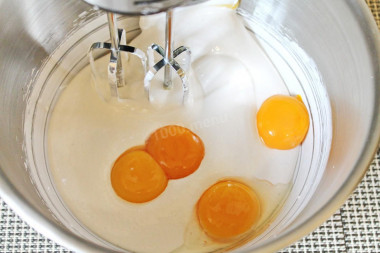
While whisking, enter the delayed yolks and whisk until smooth and fluffy. Turn off the mixer and remove the beaters, we won't need them anymore.
Step 6:
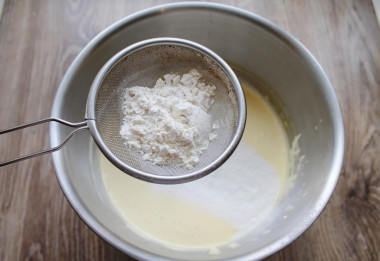
Mix flour with baking powder and sift through a fine sieve into a bowl with beaten eggs. This will make the sponge cake lush.
Step 7:
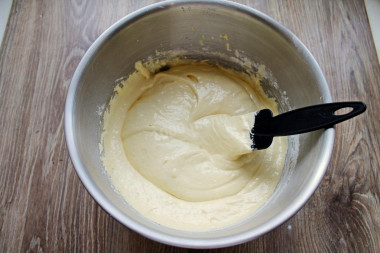
Very gently mix the flour with a spatula from the bottom up, turning the bowl in a circle, until smooth.
Step 8:
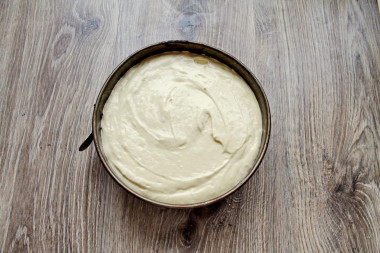
Cover the bottom of the baking dish with a diameter of 20-22 centimeters with baking paper, and grease the sides with vegetable oil. Transfer the dough to the mold and knock 2-3 times on the table so that the dough is better distributed. Place the dough form in a hot oven and bake for about 40-45 minutes at 180 degrees.
Step 9:
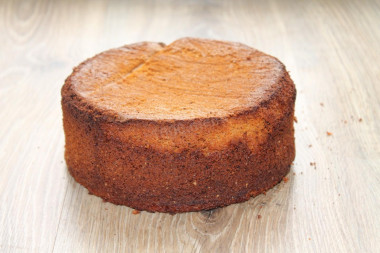
Do not open the oven door for the first time for 20 minutes, the biscuit may settle. Remove the finished biscuit from the oven and place it on the grill, turning it upside down. This will allow the biscuit not to condense under its own weight. There is quite a lot of sugar in the biscuit, so make sure that the top does not burn. If this does happen, after cooling down, gently rub a fine grater over the burnt surface to the desired state of the biscuit.
Step 10:

You can eat such a biscuit just like that or make a delicious cake. Enjoy your meal.
Be prepared for the fact that flour may need more or less than indicated in the recipe. Focus not on the amount of flour, but on the desired consistency of the dough. To avoid mistakes, read about flour and its properties!
Keep in mind that everyone's ovens are different. The temperature and cooking time may differ from those specified in the recipe. To make any baked dish successful, use useful information about the features of ovens !
Any heat-resistant form is suitable for this recipe. If you use a silicone mold, then you do not need to smear it with butter or margarine. But it is better to lightly lubricate metal, ceramic or glass dishes with vegetable oil so that the baking does not burn.
Caloric content of the products possible in the composition of the dish
- Chicken egg - 157 kcal/100g
- Egg white - 45 kcal/100g
- Egg powder - 542 kcal/100g
- Egg yolk - 352 kcal/100g
- Ostrich egg - 118 kcal/100g
- Honey - 400 kcal/100g
- Whole durum wheat flour fortified - 333 kcal/100g
- Whole durum wheat flour universal - 364 kcal/100g
- Flour krupchatka - 348 kcal/100g
- Flour - 325 kcal/100g
- Granulated sugar - 398 kcal/100g
- Sugar - 398 kcal/100g
- Vegetable oil - 873 kcal/100g
- Baking powder - 79 kcal/100g

